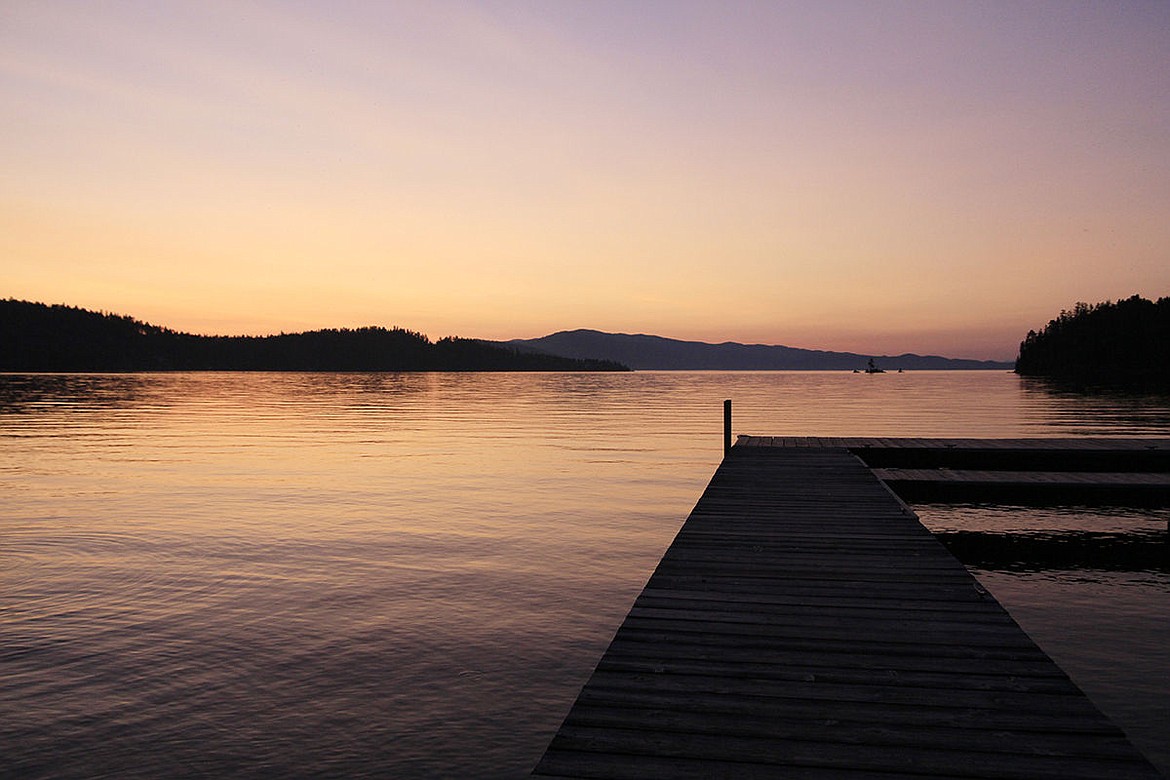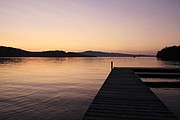Underwater invaders: Many invasive species pose threats to lake
Ken Rand | Hagadone News Network | UPDATED 9 years, 11 months AGO
On a dock that leads from the pine-bordered shoreline of Flathead Lake, I lean over and look into the clear green water as hundreds of native Northern pike minnow swim carefree through the gaps of timber structure of the dock. In the warming water of spring the fish are spawning. I have watched them since my childhood carrying out the same cycle year to year by playfully swirling around each other.
Flathead Lake is one of the largest freshwater lakes in the West and remains a particularly clean water source.
But all is not as it seems. The lake is hardly pristine, despite its visual beauty. The lake receives excess nutrients and sediment runoff from eroding shorelines, agriculture and other disturbances.
Humans have changed and manipulated the lake to fit their needs, starting with the introduction of lake trout, the most visible invasive species on the lake today, and other fish to aid sport fishing in 1905. This was followed by introduction of mysis shrimp that fed the lake trout expansion.
BUT NOW, new invasive species are coming by themselves. No one introduced them on purpose. They have a will of their own. An introduction of invasive mussels would make the problems of lake trout look miniscule.
Aquatic invasive species are now making slow and steady progress toward not just Flathead Lake, but other rivers and lakes in Montana.
The invaders include aquatic plants, fish, amphibians, pathogens and invertebrates such as mollusks and snails. They arrive in new places every day. They can alter ecosystems by taking over large areas, disrupting nutrient cycles and causing negative economic effects for hydroelectric dams and places that rely on recreation and tourism.
There are many aquatic invasive species already in Montana, including Eurasian watermilfoil, curly-leaf pondweed, flowering rush and New Zealand mudsnails. In addition, there are two mussels that aren’t here yet, but must be kept out forever: zebra and quagga mussels.
To look at an invasion that has already happened, I visit the south shore of Flathead Lake. At the Ducharme Fishing Access, a few miles east of Polson, a dirt road ends at a small constructed strip of land flanked by cottonwood trees. The shallow water is choked with plants forming dark brown patches in a thick mat. Some are native, but one plant in particular is most dominant.
Flowering rush, a native of Eurasia, has closed in on the boat ramp in dense drifting swaths.
Parts of the flowering rush break loose and float away. Each floating piece, called a rhizome, is a potential rooting plant that will drift to a new location and take root. With a reproductive strategy like this, it’s easy to see why a plant or animal could be considered invasive.
It’s a hot sunny day and Virgil Dupuis wears a Hawaiian-printed shirt as he stands by the water.
He pulls up a stalk with an identifying triangular-sectioned stem and then tosses it back into the water.
“I hate this stuff,” he says.
Dupuis is the Extension director at the Salish Kootenai College and a member of the Confederated Salish and Kootenai Tribes. He has studied flowering rush for much of his career.
He spent his childhood swimming in the lake. Since then, flowering rush has moved from where it was originally found near Lakeside, around the lake and down into the Flathead, Clark Fork and Columbia rivers. It’s now creeping toward Glacier National Park.
Dupuis notes how the presence of the invasive plant has a cascading effect on other species.
“This kind of a habitat favors invasive fish like bass and perch,” Dupuis points out. These fish aren’t native to the lake but they thrive by breeding in the flowering rush. They out-compete native fish such as endangered bull trout and declining westslope cutthroat trout.
How, then, to keep flowering rush from taking over other parts of Montana?
With Peter Rice at the University of Montana, Dupuis is now trying to develop a method to eradicate the plant in small plots by applying herbicide during lower water in the spring. So far the growth has been reduced by 95 percent.
“Aquatics are a weird area, because whose responsibility is it? You know, the landowner doesn’t own it,” he says.
The state and tribe are responsible for keeping the plant from spreading, despite limited funding. But the plant flourishes as it changes the once open water and native rush and reed habitat of the bay.
“This place here is, to be honest, kind of a lost cause,” says Dupuis, but he still holds out hope that the plant can be controlled by yearly chemical treatments or at least to keep the plant from thriving.
Out in the bay, a small test plot sprayed during low water in the spring shows less growth.
Invasive aquatic plants don’t get as much attention as some invasive species, but their potential for damage to rivers in lakes is great, although subtle when compared to mussels, pathogens or fish such as the lake trout.
Another aquatic plant that found its way to Montana is Eurasian watermilfoil, which can turn a lake or river into a dense light-blocked waterway.
On an early morning, I make my way up a twisting pine-forested back road above Whitefish Lake to Beaver Lake, the only known site of Eurasian watermilfoil in the Upper Flathead River Basin. On this day there’s only one other boat on the lake as a pair of loons call and an osprey circles overhead.
By chance in 2007, a state employee training at the lake recognized patches of dense Eurasian milfoil not far from the boat launch.
On a paddle of the lake, I encounter a native Northern milfoil in a small underwater patch at the edge of a marsh. The small lake teems in spots with this native version of the invasive Eurasian species. The wispier Eurasian watermilfoil is scarce on the lake, at least to my novice eyes peering into the water — but it’s still here. To differentiate the two kinds of milfoil, you have to count each strand on a branch or perform a genetic test in the lab. The invasive version has feathery leaves with a reddish stalk, but it’s nearly impossible to tell apart from the native, except for its rapacious growth.
In my hand the delicate strands of a milfoil break apart, each with the potential to become another plant. I watch the strands drift away and start to realize just how easy it is to move a little strand of life to another place.
The non-native milfoil can potentially choke an entire waterway if left unchecked and can stretch up to 30 feet from the floor of a lake to the surface.
Farther down the Flathead River and on to the Clark Fork and Columbia rivers, Eurasian watermilfoil has taken over large swaths of the shoreline and shallow backwaters. At Noxon Reservoir, where the river runs wide behind a dam, the waterway is unnavigable by boat with dense chains of milfoil creating light-blocking mats that change the ecosystem below. Flowering rush is there, too, having moved down the river from Flathead Lake.
Caryn Miske, director of the Flathead Basin Commission, sees progress with Eurasian watermilfoil, at least at Beaver Lake, where it might be eradicated. Removal of curly leaf-pondweed found in the Swan River and Flathead Lake near Bigfork may not be far off either, with more dredging and hand-pulling needed. Milfoil on the Clark Fork will take years of chemical sprays to reduce its dominance, but the plant will likely never be fully eradicated from the area.
“You’re looking for a needle in a haystack,” says Miske about monitoring, and “with mussels, even if you detect early, you’re often not able to save that lake, but you can save other lakes, and with invasive plants there is likelihood that we can actually do something.”
This story was produced as a part of the Crown Reporting Fellowship at the University of Montana School of Journalism with the guidance of mentor Christopher Joyce at National Public Radio to generate environmental stories about the Crown of the Continent.
ARTICLES BY KEN RAND

Virgil Dupuis

A new way to look for invasive species using eDNA
Finding the invisible
In 2012, the National Park Service found a few quagga mussels growing in Lake Powell, a vast reservoir on the Colorado River in Arizona and Utah. They had been there for years.




